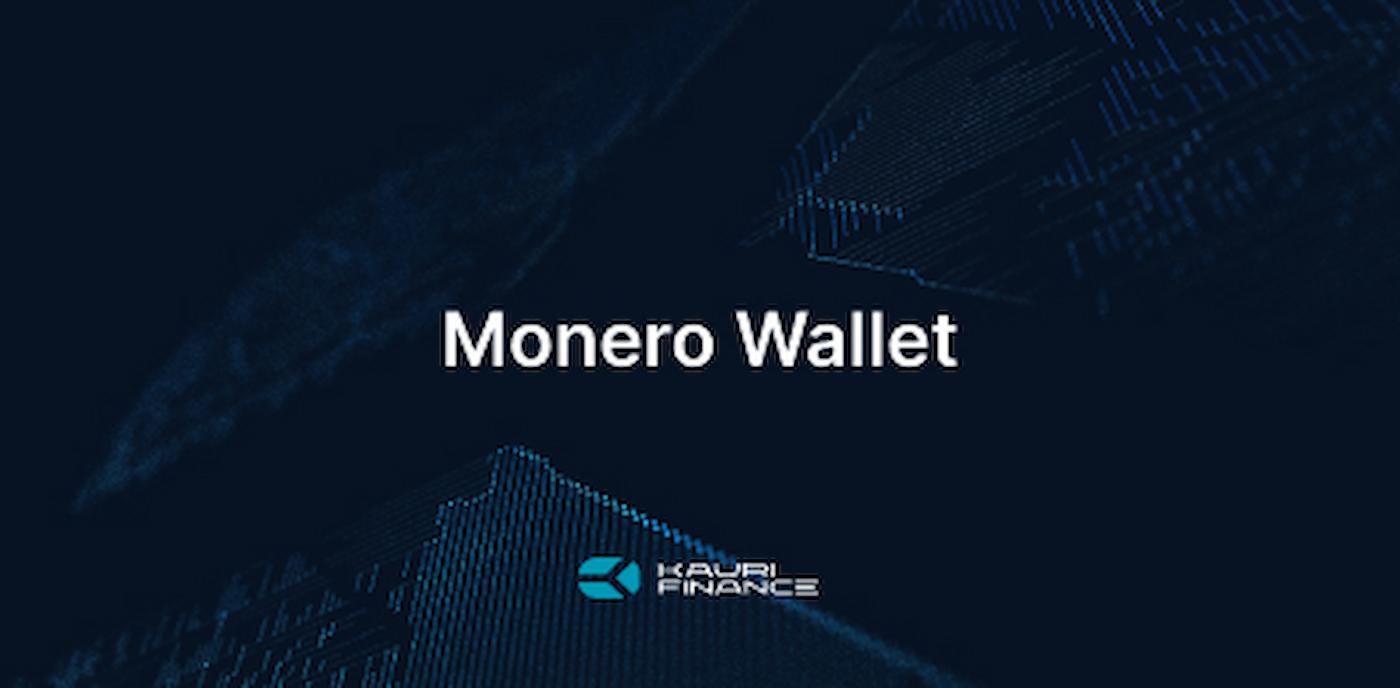
Monero Wallet

While Bitcoin paved the way for digital cash more than a decade ago, Monero has taken leaps toward true financial anonymity. It's just one of the privacy coins out there, but with its advanced cryptography, features like stealth addresses and ring signatures, plus its ASIC resistance, Monero stands as the top privacy coin by market cap.
What sets Monero apart is its community, driven by ideals rather than profit, advocating for privacy as a basic right. In an age where privacy is constantly under threat, cryptocurrencies like Monero gain significance. With an active community and exciting updates on the horizon, Monero seems to have found its niche in the crypto world – and it's here to stay.
Monero (XMR) is a cryptocurrency established on blockchain technology, prioritizing privacy and fungibility. Launched in April 2014, Monero distinguishes itself from other digital currencies by obscuring its public ledger, preventing external parties from viewing transaction source, amount, or destination. This commitment to privacy is fundamental to the fungibility of Monero (XMR), as each unit remains indistinguishable and unaffected by past transactions.
Monero (XMR) stood out as one of the pioneering cryptocurrencies to introduce cryptography that significantly enhanced privacy and fungibility compared to existing alternatives. Its primary innovation was its capability to enable users to conduct transactions without exposing this information to observers scrutinizing its blockchain. Consequently, Monero is often grouped with other privacy-focused cryptocurrencies like Zcash (ZEC), which aim to rectify privacy shortcomings in Bitcoin (BTC). As a result, Bitcoin transactions can be traced, diminishing their fungibility. Companies have the ability to identify and blacklist coins associated with suspected illicit activities, for instance.
However, unlike projects such as Zcash that garnered considerable media attention and support from venture capitalists, Monero's beginnings resemble those of Bitcoin. It emerged from a modest online tech community that gradually expanded as the project gained credibility and market traction. Yet, Monero has set itself apart from others not only in terms of privacy but also in various other aspects. For instance, Monero's software undergoes updates every six months, following a regular schedule that has facilitated the integration of new features with minimal controversy. This approach has enabled Monero to consistently introduce cryptographic advancements such as stealth addresses, which enable users to generate one-time addresses, and ring confidential transactions, which conceal transaction amounts. By pioneering such innovations, Monero continues to attract attention from cryptographers and researchers eager to explore the boundaries of what can be achieved in the realm of cryptocurrency.
How does Manero work?
Monero operates similarly to other prominent cryptocurrencies, employing proof-of-work mining to regulate the issuance of XMR and incentivize miners to append blocks to the blockchain. Approximately every two minutes, new blocks are added. However, it's worth noting that hobbyist miners may discover that mining XMR is more accessible compared to other cryptocurrencies due to the algorithm's resistance to specialized hardware. This design feature allows users to potentially mine XMR using lower-cost hardware such as laptops (CPU) or graphics cards (GPU), which are more readily available.
FAQ
How to get a Monero wallet?
There are numerous methods to create a Monero wallet: You can engage in mining, or convert other cryptocurrencies and fiat currency into XMR. Opting for the latter, utilizing an exchange is typically the most convenient approach. Various exchanges facilitate Monero transactions. While centralized platforms often offer ample liquidity and swift service, they necessitate personal information for KYC compliance. In contrast, decentralized exchanges don't mandate identification but may have lower volume and complexity. Additionally, peer-to-peer services enable individuals to meet and conduct trades directly, bypassing third-party involvement. You can open Monero wallet using KAURI crypto wallet.
What is a Monero wallet?
A Monero wallet serves as a digital tool designed to securely purchase, manage and store Monero. It facilitates transactions, allowing you to send and receive Monero, as well as access additional features such as buying, selling, swapping, and more.
In addition to facilitating sending and receiving transactions, the Monero web Wallet software maintains a private transaction history and offers cryptographic message signing capabilities. It also includes Monero mining software and features an address book. The term "hot wallet" refers to a Monero account that is connected to the internet. While it enables easy fund transfers, security levels are comparatively lower than those of a cold wallet. It's advisable to avoid storing large amounts of cryptocurrency in a hot wallet due to security risks.
A cold wallet is generated on a trusted device or computer with an airgap, ensuring enhanced security. If the device is to be reused, it's essential to securely overwrite the data storage. Once a cold wallet is connected to the internet or its mnemonic phrase or spend key is entered on an internet-connected device, it transitions from being "cold" to "hot" and should be treated as such in terms of security considerations.
How to use a Monero wallet?
Seeking a secure wallet for purchasing and storing Monero? It’s time to Download Monero Wallet. Join the multitude of users who trust KAURI Crypto Wallet, ensuring the safety of your assets. What’s next?
- Download and install the KAURI Wallet application.
- Add Monero (XMR) to your wallet.
- Utilize the KAURI Manero Wallet's functionalities such as buying, selling, swapping, and more.
How to send Monero from paypal to another wallet?
PayPal facilitates cryptocurrency transfers between PayPal, Venmo, and other wallets and exchanges. PYUSD can be transferred between PayPal and exchanges supporting it, as well as to most Ethereum addresses in wallets that accommodate ERC-20 tokens. To send cryptocurrency outside of PayPal, you must provide the wallet address of the intended recipient. It's crucial to ensure compatibility between the cryptocurrency and the recipient's wallet type; sending cryptocurrency to an incompatible address type may result in loss. Before sending PYUSD from PayPal, verify with the external wallet that it accepts PYUSD.
To transfer to an external BTC address or PayPal customer:
- Navigate to the Finances tab.
- Tap on your crypto balance.
- Tap on the image of the Transfer arrows.
- Select Send. If you wish to sync your PayPal contacts to send them crypto, tap «Sync Your Contacts». Allow PayPal to access your contacts by tapping OK.
- Choose the contact you want to send crypto to.
- If transferring cryptocurrency out of your account, you'll need to enter an external crypto address. Copy and paste an address, manually enter it, or scan a QR code by tapping the QR code button.
- Enter the amount of crypto you want to send and tap «Next». Ensure accuracy to prevent loss; crypto sent to the wrong address will be irretrievable. You can specify the exact amount of cryptocurrency to send or enter a dollar amount. PayPal will approximate the corresponding amount of crypto based on the entered dollar value.
- Review the transaction details and tap «Send Now» to complete the transfer.
How much is Monero?
Monero was launched in June 2014. According to our platform's data, the first exchange rate of XMR was $1.99. The lowest price recorded was $0.2390120 in February 2015, while the highest price reached was $477.96 in May 2021. In the first year of available data, the closing price of XMR was $0.4346600, representing a 21.87% increase from the opening price. The most prosperous year for Monero's price performance was 2017, with an average price of $75.32. In that year, the price closed at $349.03 after reaching the maximum price of $476.40.
Based on the technical analysis of Monero prices projected for 2024, the minimum expected cost of Monero is estimated to be $100.43. The maximum level that the XMR price could potentially reach is $100.01. Additionally, the average trading price is anticipated to hover around $99.58.
How do I get a Monero wallet address?
- Open KAURI App.
- Click «Web3 wallets» and open your mobile Manero Wallet.
- Click on «Deposit», select coin & ta-da! You will see your newly created Monero wallet address.
